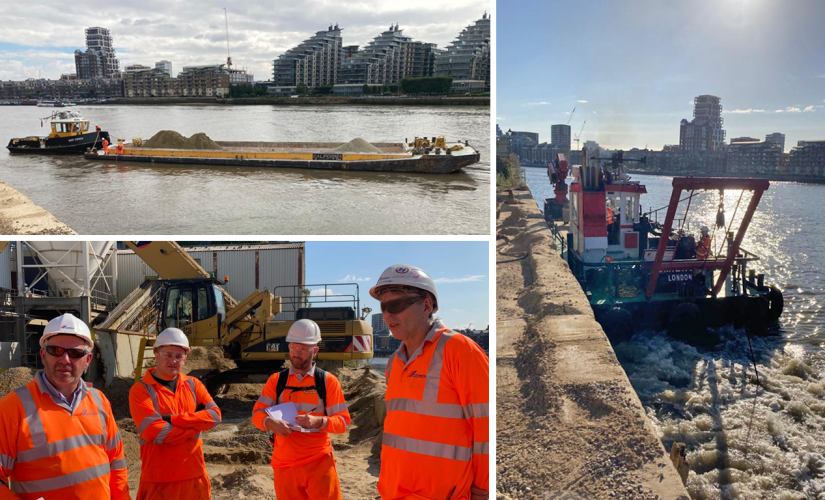After a short break for maintenance work, barges between Dagenham and Fulham have begun again.
These barges transport over 100,000 tonnes of sand and gravel to Fulham every year via the River Thames and are a very successful way to ensure our material reaches our Readymix plant when it is needed, without adding trucks to London’s busy roads. Using a barge offers a 75% CO2 saving compared to road transport, with each loaded barge saving the equivalent of 20 HGV lorries travelling across the centre of London.
By using alternative transports methods and saving lorry movements on the roads, demonstrates CEMEX’s Future in Action commitment to net zero CO2.
Some dredging work was required at the berth and approach at Fulham as the area had become too shallow and was not level – this happens because of build-up in the river and can mean that the barge takes on water.
Thanks to all involved in completing this work, it was a real team effort across Supply Chain, Readymix, Marine and Engineering. Well done, and in particular thank you to Joe Holcroft and Graham Osman from Marine, Alex Flocea and Dean Trowbridge from Materials, Chris O’Brien from Engineering, and Danielle Cullinane from Planning. Not forgetting safety support from Julie Welch and Jason Aked.
Nigel Bateman, Senior Operations Manager for London, commented: “Having material coming down the river cuts down on lorry movements in a very tight yard, so it is vital that we have barge deliveries at Fulham. This dredging work was, therefore, very important and I’m pleased with how well it was completed.”
An ongoing maintenance plan is being put in place at the site, with new rubber tyre fenders and life buoys also recently added, as well as protection around the mooring points. Other improvements planned include rising piled mooring points and fenders to allow bigger barges in future.
